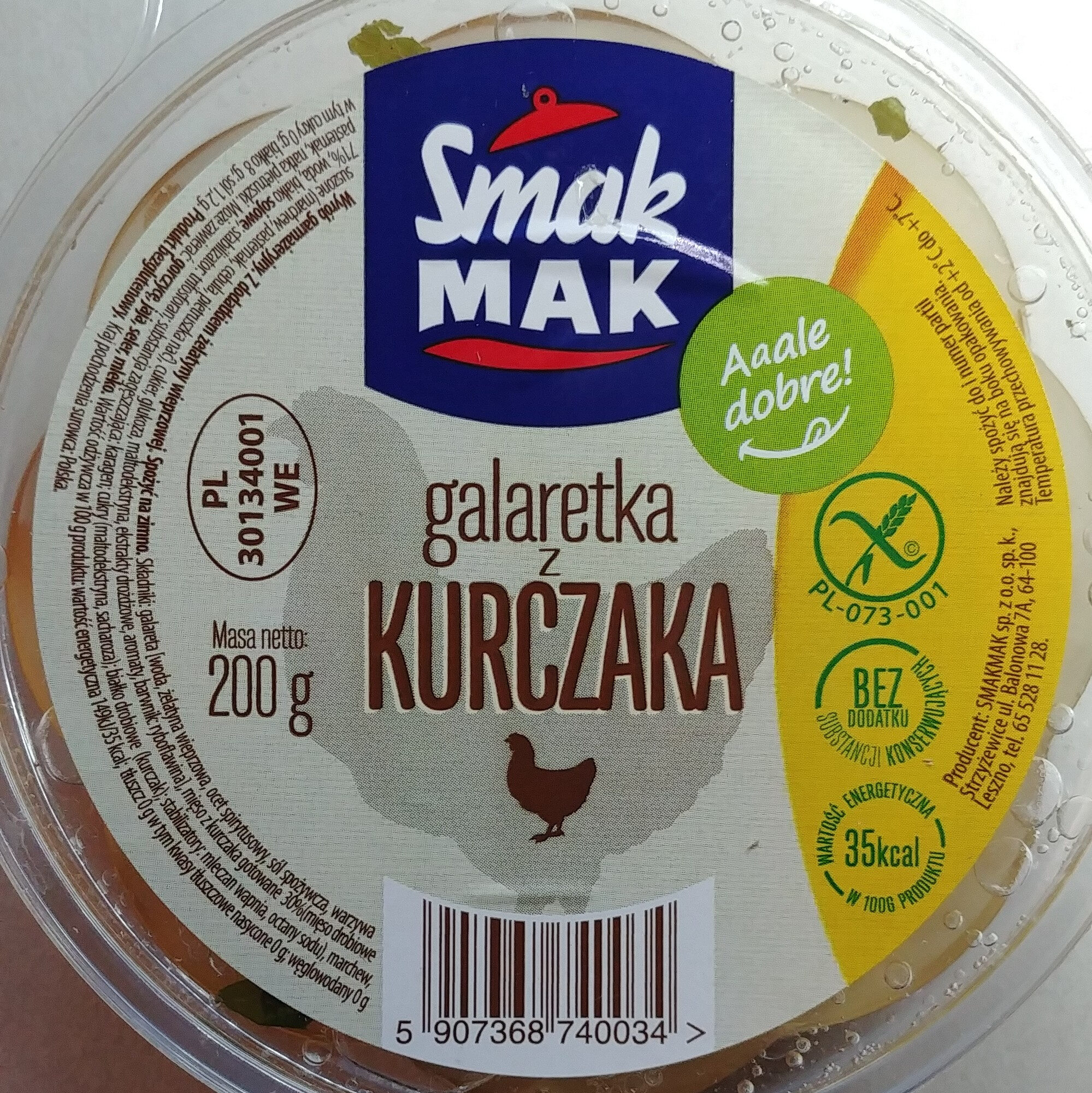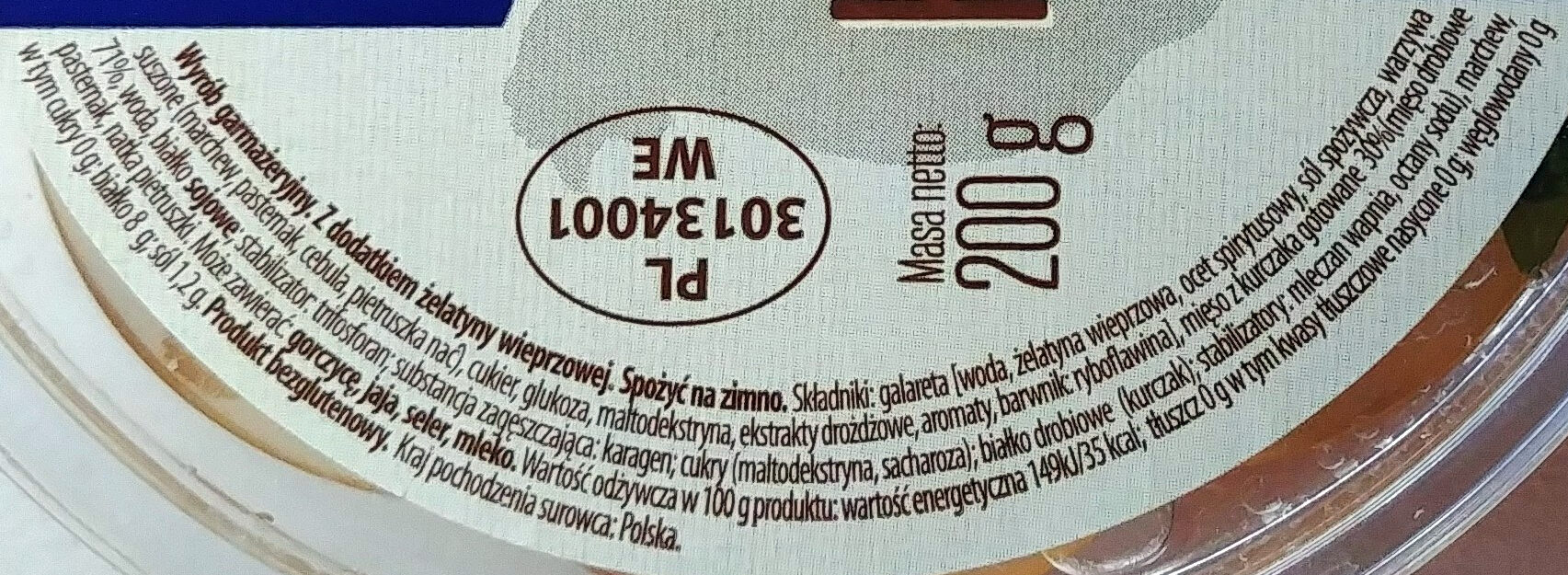Galaretka z kurczaka - Smak Mak - 200 g
This product page is not complete. You can help to complete it by editing it and adding more data from the photos we have, or by taking more photos using the app for Android or iPhone/iPad. Thank you!
×
Barcode: 5907368740034 (EAN / EAN-13)
Quantity: 200 g
Packaging: Plastic
Brands: Smak Mak
Categories: pl:Galat
Labels, certifications, awards: No gluten, No preservatives, pl:PL-073-001
Origin of ingredients: Poland
Traceability code: PL 30134001 WE
Stores: Polska Chata
Countries where sold: Poland










